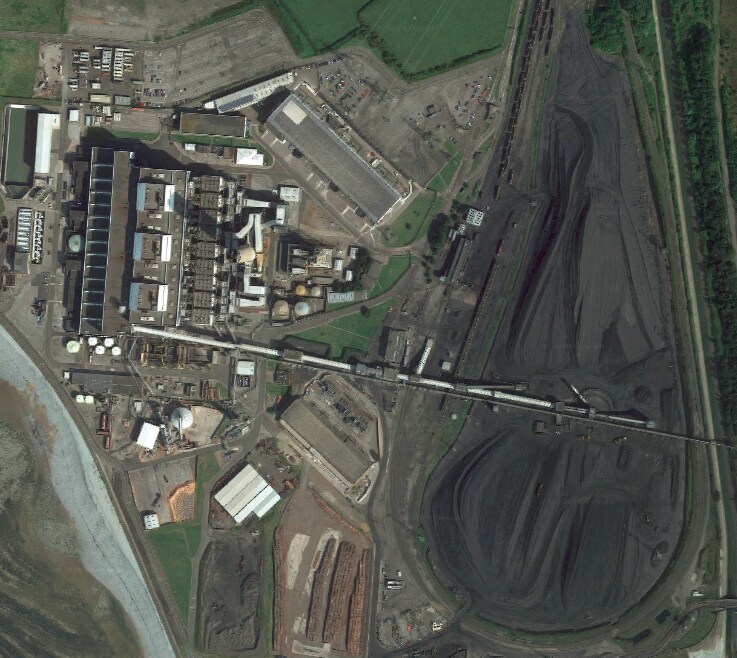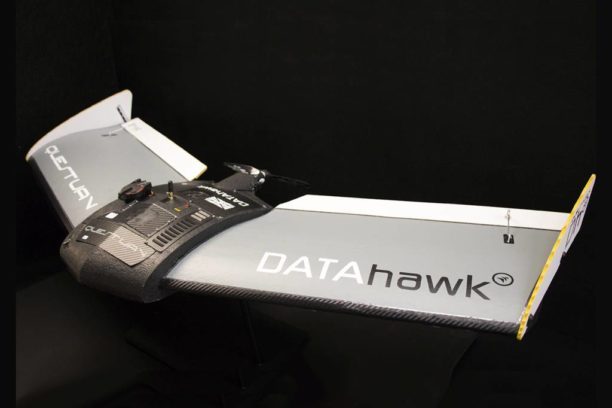While mining and stockpile measurement are two commercial drone applications that the industry is very familiar with, widespread industry adoption has remained a challenge for the drone industry. It’s a good sign, therefore, when one of the world’s biggest names in professional services, PwC, uses drones for a stock count audit.
“In a global first for the network, PwC UK has undertaken a stock count audit using a drone, as part of a wider drive to harness emerging technologies to enhance audit quality and efficiency and transform the audit process,” PwC reports.
The following is taken from a PwC press release:
The drone, which was manufactured and operated by UK drone company QuestUAV, was used to capture over 300 images of the coal reserve at one of the UK’s last remaining coal-fired power stations, Aberthaw, in South Wales, owned by one of Europe’s largest energy firms, RWE.
The images from the drone were used to create a point cloud ‘digital twin’ of the coal pile in order to measure its volume. The value of the coal was then calculated to within 99+% accuracy based on that volume measurement.

Figure 1: Aerial image of the site
Figure 3: The images captured by the drone are processed using photogrammetry, where the images are ‘stitched’ together and compared to determine how many points they have in common with one another.
Richard French, audit partner at PwC, commented:
“Coal stock has a material value on RWE’s balance sheet, so we carry out an annual stock observation and evaluation as part of our audit process. We observe the manual coal count carried out by RWE’s external surveyor, then assess the resulting data which feeds into the financial statements. The traditional stock count method involves climbing over the coal pile and using a two metre GPS tracking pole to measure the area and elevation from the ground at various points. The data is then used to build a contour of the reserves and estimate its volume.
“While the traditional method remains reliable and will still be used for RWE’s formal year-end financial statements, the drone trial was conducted to explore ways of challenging the traditional method of stock counting. It was a classic example of new technology challenging the old – and based on our results, the potential is groundbreaking.”
The main objective of the flight was to assess the accuracy, efficiency and logistical benefits of using drones when compared to traditional surveying methods. Initial findings from the project concluded that:
- The traditional method of manually traversing the coal pile can take around 4 hours, whereas using a drone it can be done in half an hour – a reduction of 85%;
- The drone captured c.900 data points per cubic metre, obtaining impressive overall accuracy levels of 2cm. This is compared to c.1,200 readings taken across the whole site using the traditional method, therefore the drone enhances accuracy by providing a true, continuous representation of the coal pile;
- The preparation for the drone flight requires access to only a limited area of the coal pile and therefore poses less of a health and safety risk, particularly when parts of the coal pile are unstable; and
- The flight does not interrupt normal operations on the coal pile, e.g. movement of machinery, and therefore is a less disruptive method.
The digital twin of the coal pile produced from the drone data can be viewed via PwC’s Geospatial app, a visualisation tool which helps the PwC audit team interrogate data about the inventory on site. Operational benefits of using the drone include:
- More efficient monitoring and management of the Aberthaw site, which covers a total area of approximately 200 hectares (e.g. how to best store the coal to free up the most space);
- Improved knowledge on the landscape around the site using aerial images (e.g. for vegetation management); and
- Providing valuable insights on the health and maintenance of the wider power station assets.
While on site a multi-rotor drone was also used to take photos of the wider site, allowing RWE to inspect the condition of assets that are at height and otherwise difficult to access. This is just one other use case to demonstrate the benefits drones can have for businesses.
Elaine Whyte, UK drones leader at PwC, added:
“This trial with RWE is the first time PwC has used drones for audit stock count purposes. It demonstrates the powerful new perspective that we believe drones can offer for businesses across a wide variety of industries. Sectors with large assets in hard to reach areas are the most obvious starting points for expanding this kind of work further – from mining to agriculture and forestry.
“Our recent economic report1 showed that drones have the potential to not only improve UK productivity, but also offer significant net cost savings for businesses to the tune of £16bn by 2030. In this case, drones have allowed us to trial a more efficient service which has the potential to save both money and time, while allowing us to deliver greater insight too. There is also a clear health and safety benefit to using drones for this type of work, without someone having to climb over the coal pile.”
Figure 4: QuestUAV’s fixed wing drone, ready to take flight
